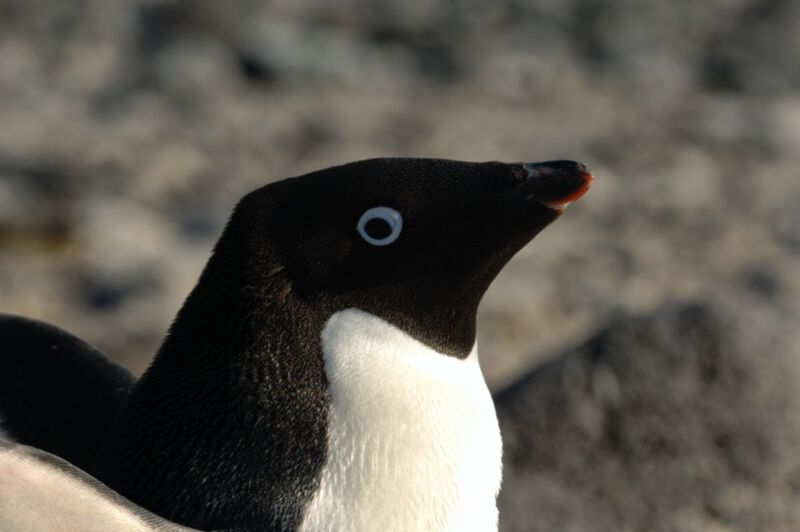
Enlarge / Bombs away! When approaching a brooding penguin in its nest, it's best to beware of flying feces. Penguin poo can travel as far as 1.34 meters (about 4.4 feet), a new study finds. (credit: Wolfgang Kaehler/LightRocket via Getty Images)
Nature is a brutal place, so during brooding, chinstrap and Adélie penguins are reluctant to leave their eggs unguarded in the nest—even to relieve themselves. But one also does not wish to sully the nest with feces. So instead, a brooding penguin will hunker down, point its rear end away from the nest, lift its tail, and let fly a projectile of poo—thereby ensuring both the safety of the eggs and the cleanliness of the nest.
Back in 2003, two intrepid physicists became fascinated by this behavior and were inspired to calculate the answer to a burning question: just how much pressure can those penguins generate to propel their feces away from the edge of their nests? Answer: about three times more pressure than a human could produce. That paper earned them a 2005 Ig Nobel Prize and lasting glory among those obsessed with pooping penguins. Now, a pair of a Japanese scientists has weighed in on the matter, calculating the projectile trajectory of expelled feces and recalculating the rectal pressure. These scientists reported on their findings in a draft paper they posted to the physics arXiv.
According to Victor Benno Meyer-Rochow of the Research Institute of Luminous Organisms in Japan, a co-author of the original 2003 paper, these fecal findings all started with an expedition he led to Antarctica. Although he was collecting samples of local marine worms and tiny terrestrial insects called springworms for further study, he also took copious photographs of the many penguins in the region, which he used in his lectures. During a seminar at Kitasato University in Japan, a young woman asked about a slide showing a penguin brooding on its nest, wondering about the white and pink lines radiating outward. She interpreted them as "decoration" and asked how the penguins made them.
No comments:
Post a Comment